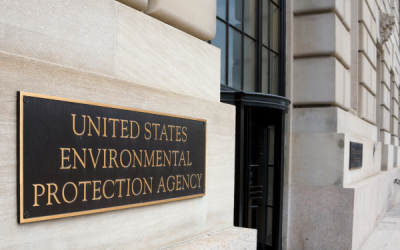The 2022 Ag Census collected 6M data points on producers, production, economics, and almost every aspect of agriculture you can imagine.
What’s the big deal? Census data might bore you just thinking about it—but this ag-focused survey can give a helpful “snapshot in time” of what’s happening with the nation’s farmland, how policy is impacting the ag sector, and potential problems on the horizon.
One of the biggest (and most worrisome?) trends this year was the decline in farmland, which Ag Secretary Tom Vilsack called a “wake-up call.”
Here are some of the other major takeaways from the census:
- Total number of farms and ranches is down 7% from 2017, at 1.9M. There were 880M farmland acres (which accounts for 39% of all U.S. land), and the average size for each farm or ranch was 463 acres (up 5%).
- What’s that farmland being used for? Almost 3/4 of farmland was used for two commodity categories: oilseed and grain production (32%) and beef cattle production (40%).
- Young guns: There were 296,480 producers 35 and younger (accounting for 9% of all producers). There was also a big increase (up 11% from 2017) of farmers with a decade or less of experience (about 1M farmers in 2022). Meanwhile, the average age of all producers ticked up just a bit (up 0.6 years from 2017) to 58.1. That increase was still smaller than previous censuses’ average age increases, though.
- Girl power: In 2022, more than a third (36%) of all producers were women, with 1.2M in 2022. There was also at least one female decision-maker on more than half (58%) of all farms.
Soundbite: “This survey is essentially asking the critical question of whether as a country are we okay with losing that many farms? Are we okay with losing that much farmland or is there a better way? That’s the importance of this survey.” — Tom Vilsack
Short Corn Packs a Punch
Dynamite comes in small packages—which can be true with new seed technology. What’s...
Congress to EPA: What’s Your BEEF with Meat Packers?
The Environmental Protection Agency (EPA) is considering new regulations that take aim at meat and poultry processors.
And some members of Congress have a BEEF with the EPA’s proposals.
The proposed rules: In late January, the EPA released the details of its proposed “Clean Water Effluent Limitations Guidelines and Standards for the Meat and Poultry Products Point source category.”
Huh?
Basically, the EPA formally published its proposals to combat wastewater contaminants that come from slaughterhouses.
Okay… that makes more sense.
At the heart of the rules proposal is a concern from environmental groups about nitrogen and phosphorus pollutants that originate from slaughterhouses. In some cases, the wastewater goes directly into waterways. In other cases, the water goes to municipal wastewater treatment facilities.
But not everyone is on board with the EPA’s suggestions…
Congress responds: Last week, two U.S. representatives—Eric Burlison (MO) and Ron Estes (KS)—pushed back against the EPA and introduced the “Banning EPA’s Encroachment of Facilities (BEEF) Act.” If passed and signed by President Biden, the law would prohibit the EPA from finalizing, implementing, or enforcing the rule.
According to the lawmakers, the proposed rules place undue burden on small processors—costs that can be absorbed by larger companies.
Soundbite: “The… proposed regulation isn’t just an attack on family-run small businesses, it’s an attack on rural communities,” said Burlison. “These meat and poultry processors are the lifeblood of our communities. The BEEF Act… lets these hardworking Americans do what they do best, produce safe, affordable food for our families.”
University of Illinois Makes Big Mooves in Milk Production
Pump it up: Scientists led by Matt Wheeler at the University of Illinois Urbana-Champaign are...




